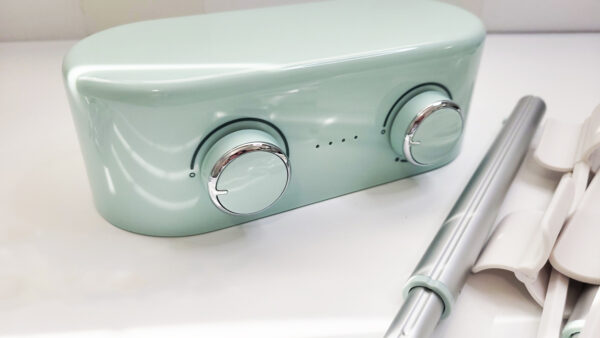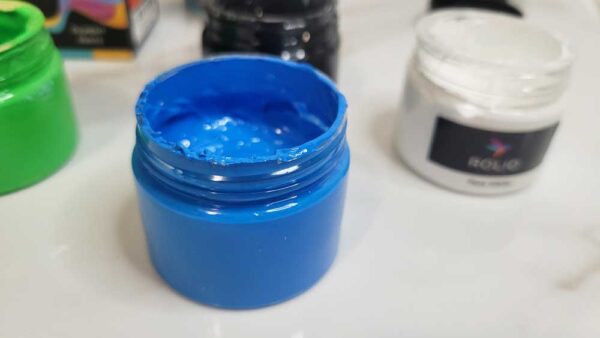How To Color Resin 101: Pro tips
Welcome, crafters and DIY enthusiasts, to our guide on how to color resin!
If you’ve ever marveled at the glossy, vibrant surfaces of resin creations and wondered how to infuse your projects with that magical touch of color, you’re in the right place.
Today, we’re diving into the art of coloring resin. We’re keeping it simple and straightforward, sharing tips and tricks that even the newest hobbyist can grasp.
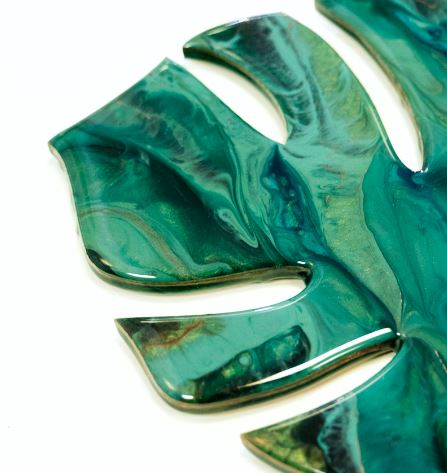
This guide will help you with the process of adding mica powder to resin, using alcohol inks and powdered colorants.
Get ready to unleash your inner artist as we explore the best colorants, essential techniques, and practical tips to bring your resin creations to life.
How To Color Resin Guide
1. Importance Of Color In Resin Projects
Today, we’re lifting the curtain on one of the most exciting aspects of resin crafting – the art of coloring. The right hues can turn a simple piece into a mesmerizing work of art, evoking emotions and telling stories.
Whether you’re aiming for vibrant and bold or subtle and elegant, understanding the significance of color is the first step towards creating resin pieces that speak to the soul. To do resin coloring properly, you will need to know what colors work together.

2. Simple Color Harmony Chart for Resin Crafting
| Base Color | Complementary Colors | Harmonious Colors | Contrasting Colors |
|---|---|---|---|
| Blue | Orange, Yellow | Green, Purple | Red, Yellow, Orange |
| Red | Green, Turquoise | Yellow, Purple | Blue, Green, Yellow |
| Green | Red, Orange | Yellow, Blue | Purple, Red, Yellow |
| Yellow | Purple, Violet | Red, Green | Blue, Purple, Red |
| Purple | Yellow, Green | Blue, Pink | Yellow, Orange, Green |
| Orange | Blue, Turquoise | Yellow, Red | Purple, Blue, Green |
Tips For Using This Chart
- Complementary Colors: These are opposite each other on the color wheel and can create vibrant contrasts.
- Harmonious Colors: Colors that are adjacent to each other on the color wheel; they tend to blend well and create serene combinations.
- Contrasting Colors: Colors that are farther apart on the color wheel and provide a striking and bold effect when used together.
Remember, personal preference plays a significant role in color choices. This chart is a starting point, and you’re encouraged to explore and experiment with different combinations to find what resonates best with your creative vision.
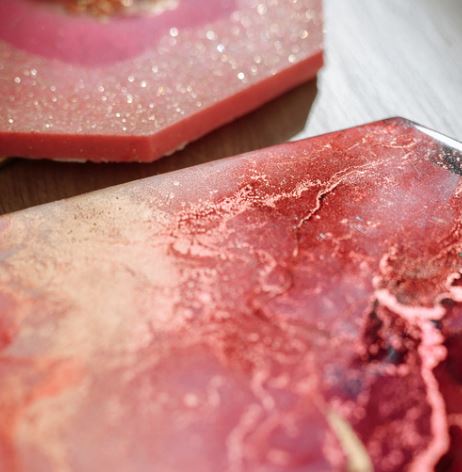
3. Solid Color Casting
Achieving a solid color cast in resin requires a methodical approach to ensure consistent and visually appealing results.
Step-by-Step Guide For Adding Color To Resin
Begin by preparing your resin mixture according to the manufacturer’s instructions. For solid color casting, it’s crucial to add the chosen colorant gradually, stirring thoroughly at each step.
Start with a small amount and increase gradually until the desired color saturation is achieved. Ensure that the color is evenly distributed throughout the mixture.
Pour the resin into your mold, taking care to eliminate air bubbles. Allow the resin to cure completely according to the recommended time, ensuring a smooth and solid finish.
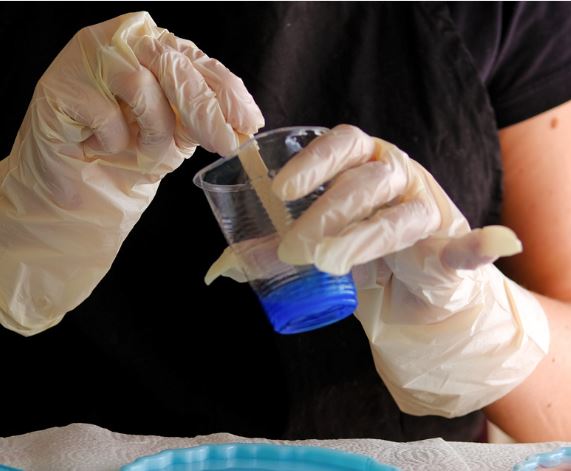
Mixing Ratios for Consistent Results
Maintaining proper mixing ratios is essential for achieving consistent color throughout your resin project.
Follow the recommended guidelines provided by the colorant manufacturer, and measure your colorant and resin precisely.
Using too much colorant can impact the resin’s curing process and result in undesired texture or color variations.
Keep in mind that different colorants may require adjustments in ratios, so it’s beneficial to perform small-scale tests to determine the optimal proportions.
For larger projects, see our guide on How Much Pigment Per Gallon Of Epoxy
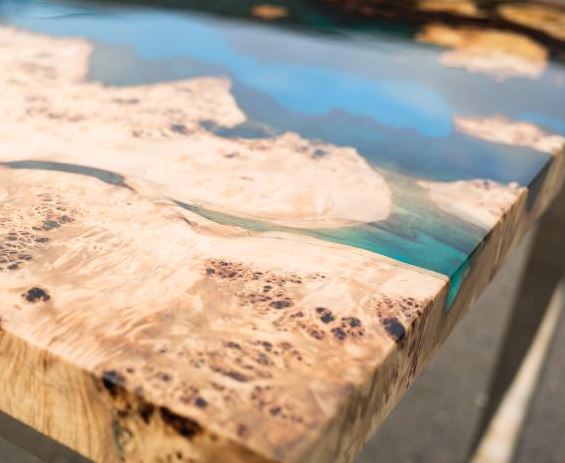
Troubleshooting Common Issues
Encountering issues during solid color casting is not uncommon, but with a few troubleshooting techniques, you can address and overcome challenges.
If air bubbles appear in the cured resin, consider using a heat gun or torch to carefully remove them before the resin sets completely.
Uneven color distribution may be resolved by ensuring thorough stirring during the mixing process.
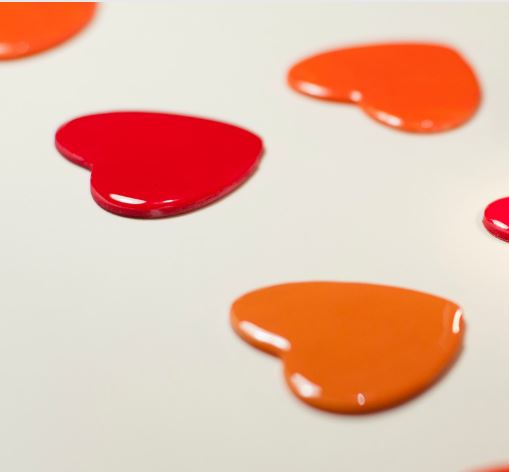
If the resin surface appears cloudy or hazy, it could be due to inadequate mixing or the presence of moisture—address this by mixing in a controlled, moisture-free environment.
By understanding and implementing these troubleshooting strategies, you can enhance your solid color casting technique and achieve professional and visually stunning resin pieces.
4. Layering and Embedding Color
Layering and embedding techniques in resin provide a captivating way to add depth, dimension, and intrigue to your creations.

Creating Depth with Layered Colors
Layering colors in resin allows artists to achieve stunning depth and visual interest. Begin by pouring a thin layer of clear resin into your mold and letting it partially cure.
Once tacky, add a small amount of your chosen colorant and allow it to spread naturally or manipulate it with tools for a controlled effect.
Repeat this process, alternating between clear and colored layers, to build a visually engaging composition. Experiment with different color combinations and varying the thickness of each layer to create a sense of depth and complexity in your resin piece.
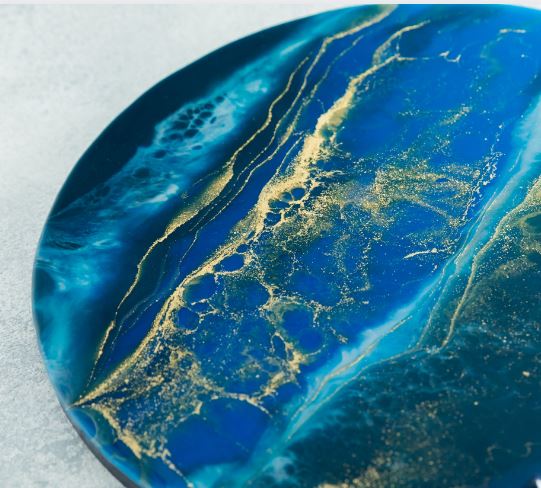
Embedding Objects in Colored Resin
Embedding objects adds a touch of personalization and intrigue to your resin creations. Before pouring the final layer of resin, carefully place small objects—such as dried flowers, charms, or mementos—onto the partially cured resin layer.
Ensure the objects are arranged to your liking, and then pour the remaining resin over them. This technique not only preserves and showcases the embedded items but also adds a three-dimensional quality to your piece.
Take care to avoid trapping air bubbles between the layers, and use a toothpick or small tool to reposition objects if needed before the resin fully cures.
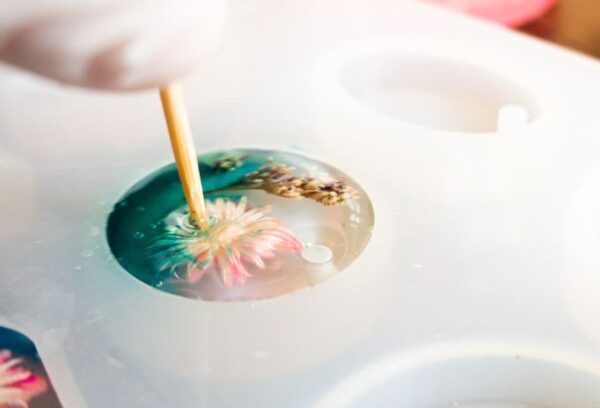
Tips for Achieving Clear Layers
Creating clear and flawless layers in resin requires attention to detail and a few key tips. First, make sure each layer is fully cured before adding the next to prevent bleeding or blending of colors.
Keep your workspace free from dust and debris, as these can mar the clarity of the layers. Use a heat gun or torch to eliminate any surface bubbles that may form during the pouring process.
For optimal clarity, use a high-quality, bubble-free resin and avoid overmixing, as excessive stirring can introduce unwanted bubbles.
By incorporating these tips into your layering and embedding techniques, you’ll master the art of achieving clear, vibrant, and visually captivating resin layers.
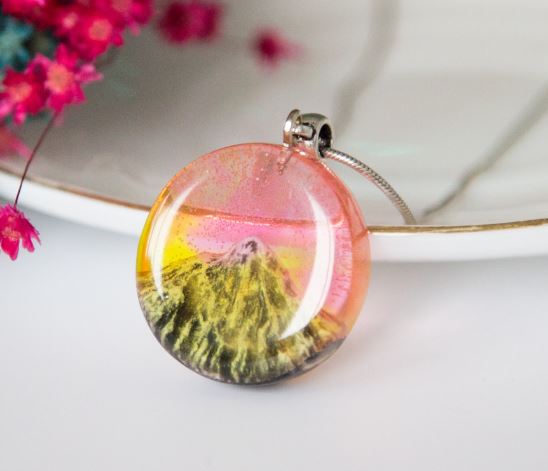
5. Swirling and Marbling Colorants
Swirling and marbling techniques in resin offer a captivating way to infuse movement and fluidity into your creations, resulting in visually dynamic and one-of-a-kind pieces.
Achieving a Marbled Effect
To achieve a mesmerizing marbled effect in resin, start by preparing your base color and accent color in separate containers.
Pour each color into the mold in a random pattern or create specific swirls with a stirring tool. Use a toothpick or a skewer to gently swirl the colors together, creating a marble-like pattern.
Avoid overmixing to maintain distinct color variations. Experiment with different color combinations, opacities, and swirling techniques to achieve the desired marbled effect.
Allow the resin to cure fully, unveiling a stunning and unique masterpiece with intricate patterns reminiscent of natural marble.
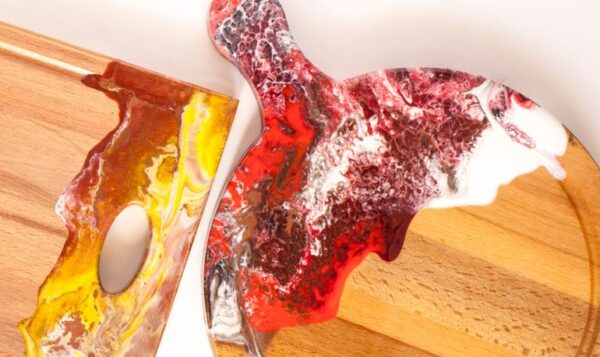
Swirling Techniques
Mastering swirling techniques is key to achieving beautiful and harmonious patterns in resin. Begin by pouring your base color into the mold and then adding the accent color in various locations.
Use a toothpick, skewer, or other tools to create swirls by gently dragging the colors through each other. Experiment with different swirling motions, such as figure-eight patterns or concentric circles, to achieve diverse effects.
Be mindful of the resin’s curing time; perform swirling techniques while the resin is still in its liquid state to allow for optimal blending. Practice and experimentation will help you develop your unique swirling style.
Best Practices for Patterns
Maintaining uniformity in swirling and marbling patterns requires attention to detail and some best practices. Try not to add too much resin to the surface or the resin will pool or spill over the edge too much causing your pattern to go with it.
Consistency in the resin’s viscosity is important, if the resin is runny this technique will not work. So follow the manufacturer’s instructions for mixing and pouring.
If creating a larger piece, consider working in sections to ensure that each part receives equal attention and achieves uniform patterns.

Additionally, maintaining a steady hand and controlling the speed and pressure of swirling tools will contribute to the creation of harmonious and visually pleasing patterns.
With practice and a keen eye, you’ll hone your skills in swirling and marbling to produce resin pieces with stunning and consistently beautiful designs.
6. Resin Tinting Techniques
Transparent Tinting for a Stained Glass Effect
Transparent tinting is a captivating technique that mimics the luminosity of stained glass in resin creations.
Begin by preparing clear resin and dividing it into separate containers. Add small amounts of transparent pigments or dyes to each container, creating a palette of vibrant hues.
Pour each colored resin in distinct sections of the mold, allowing them to flow and blend organically. The key is to maintain transparency, so use minimal colorant for each layer.
As the colors meld, they create a beautiful, translucent effect resembling stained glass. Experiment with different color combinations and layering to achieve a striking, light-catching masterpiece.
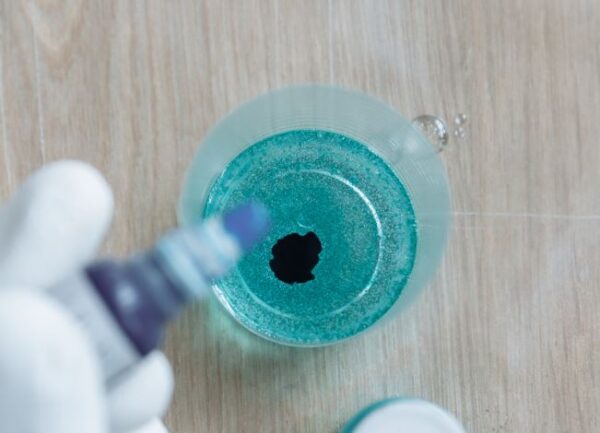
Gradation and Ombre Effects
Creating gradation or ombre effects in resin involves skillful blending of colors to achieve a seamless transition from one shade to another.
Prepare your resin and divide it into containers, each holding a progressively darker or lighter version of the chosen color.
Pour the darkest color first, allowing it to settle in one section of the mold. Gradually introduce the lighter shades in consecutive layers, ensuring a smooth and gradual transition between each color.
Use a toothpick or a stirring tool to gently blend the colors at the points of intersection.
This technique can be applied to various projects, from jewelry to larger art pieces, adding depth and visual interest through the careful application of color gradients.
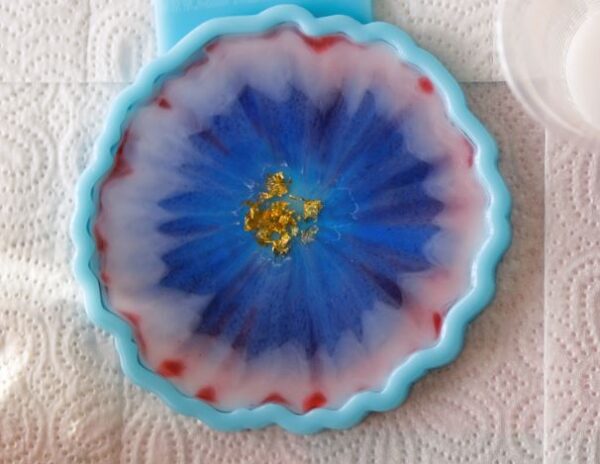
Utilizing Multiple Colorants for Complexity
Enhance the complexity of your resin creations by utilizing multiple colorants in a single project. Combine pigments, dyes, or even mica powders to create a rich and nuanced palette.
Begin by preparing each color separately. Pour the colors into the mold in a deliberate manner, allowing them to intermingle or creating distinct sections for each shade.
Experiment with swirls, layers, or patterns to showcase the complexity of the combined colors. This technique provides endless possibilities for artists seeking to infuse depth, texture, and a sophisticated vibrancy into their resin pieces.
By skillfully blending multiple colorants, you can achieve a level of intricacy and visual interest that elevates your resin creations to a new realm of artistic expression.
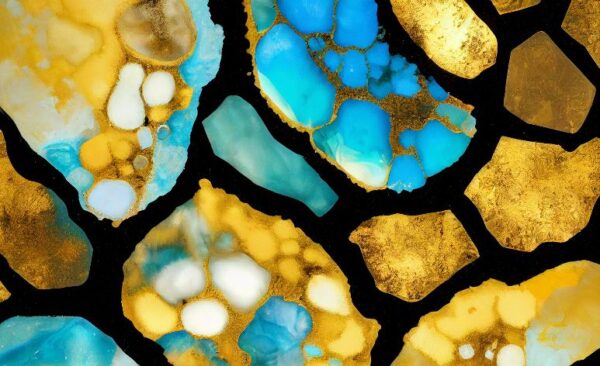
7. Testing Color On Small Scale
Importance of Small-Scale Tests
Conducting small-scale tests is a fundamental step in the resin coloring process, offering invaluable insights into how colorants interact with the resin and the overall aesthetic outcome.
Small-scale tests allow you to experiment with color combinations, techniques, and formulations without committing to a larger project.
Understanding how the colors behave during curing, layering, and mixing on a small scale helps refine your approach and ensures the success of your final resin piece.
This preemptive exploration provides a platform for creative expression and fine-tuning before diving into more extensive and intricate projects.
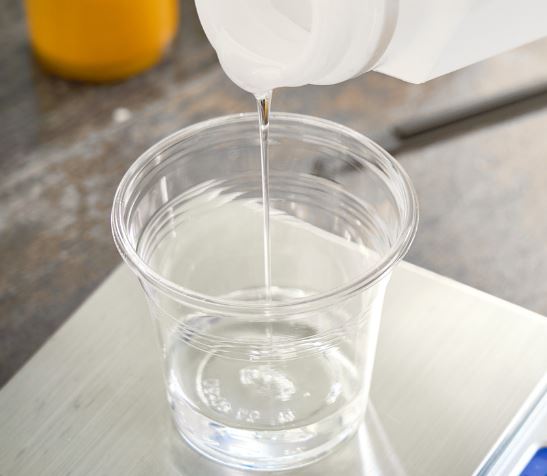
Avoiding Waste and Mistakes
Small-scale tests serve as a practical means of minimizing waste and avoiding potential mistakes.
Rather than using larger quantities of resin and colorants for an untested project, the smaller scale allows you to conserve materials.
In the event of an unexpected outcome or undesired color combination, the impact is limited, and adjustments can be made without significant resource loss.
This approach not only contributes to a more sustainable creative process but also fosters an environment of experimentation and learning where mistakes are seen as opportunities for improvement.
Adjusting Formulations Based on Tests
The information gleaned from small-scale tests empowers you to make informed adjustments to your formulations.
By observing how different colorants, ratios, or layering techniques interact in a controlled setting, you can refine your approach for optimal results.
If a particular color is too dominant or subtle, or if curing times need adjustment, these insights can guide you in modifying your formulation accordingly.
This iterative process of testing, observing, and adjusting ensures that when you undertake larger projects, you have a well-informed and perfected approach that aligns with your creative vision.
Small-scale tests serve as a foundation for the successful execution of more intricate and ambitious resin projects, promoting efficiency and creativity in equal measure.
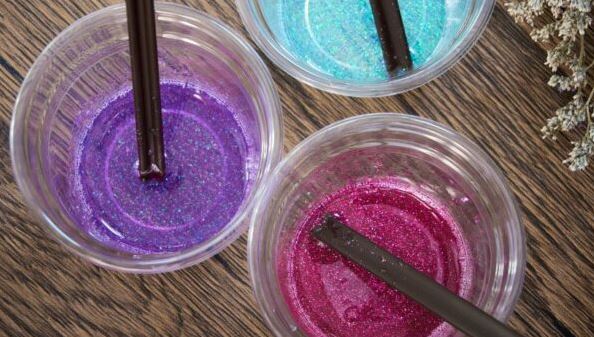
8. What You Can Color Resin With
On this blog we use resin on a regular basis and have helpful guides on choosing the best colorants for resin. You can use all types of colorants to use in resin and the most important thing is to experiment with small pieces to see how your resin is going to react.
There are many different colorants you can use for resin, and for this article we will explain the top 5 that are used here most often,
See our complete guide of the Best Colorants For Resin where we go over our top 17 choices and how to use each one for resin.
Powdered Pigments

Mica Powders For Resin
Mica powders, finely ground mineral particles coated with pigments, offer a unique and dazzling way to color resin.
Known for their shimmering and reflective qualities, mica powders come in a wide spectrum of colors and are prized for adding a touch of glamour to resin creations.

The natural sparkle of mica powders can infuse projects with a subtle or bold luminosity, depending on the artist’s preference.
These powders are particularly well-suited for those looking to achieve a pearlescent or metallic finish in their resin crafts, elevating the visual appeal of each piece.

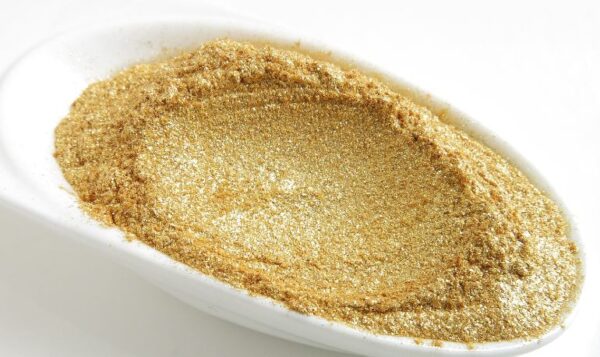
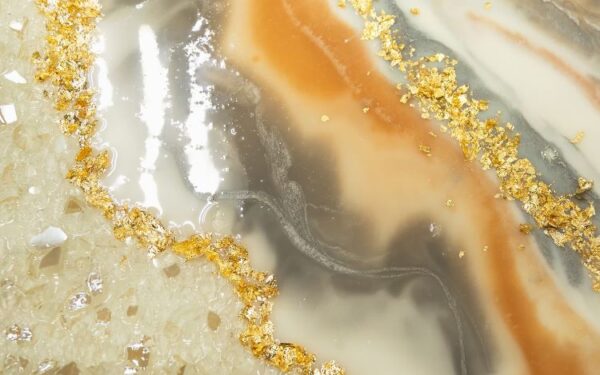
Liquid Dyes For Resin
Resin dyes are liquid colorants specially formulated for use in resin projects, offering a versatile and dynamic way to infuse vibrant colors into your creations.
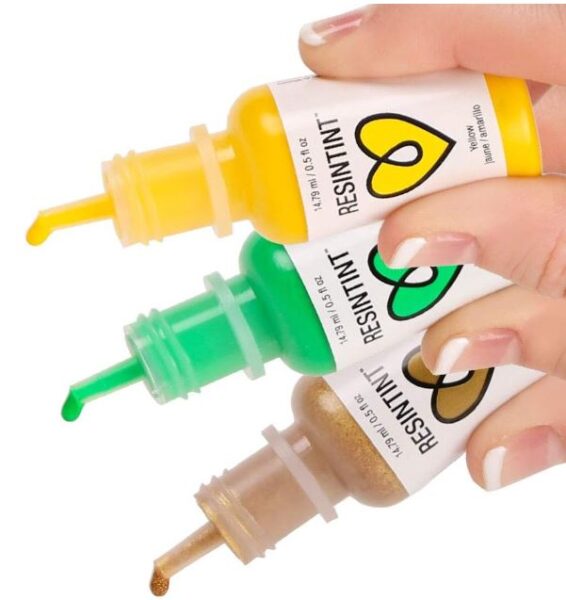
Unlike pigments, dyes are usually transparent and can produce translucent effects, allowing light to pass through and creating stunning, ethereal finishes.
Available in a wide range of shades, resin dyes open up a spectrum of possibilities for artists looking to achieve subtle tints, gradients, or even captivating stained glass effects in their resin crafts.
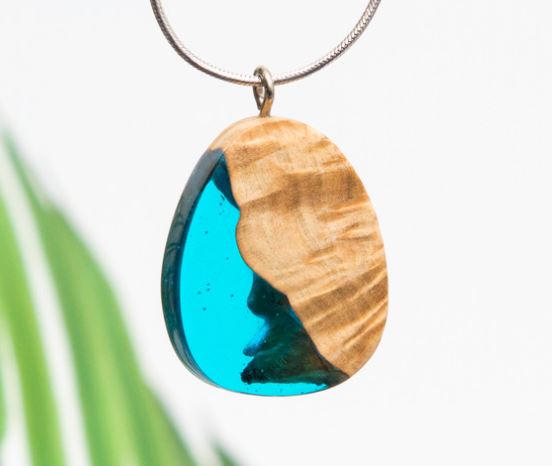
Alcohol Inks For Resin
Alcohol inks are fun to use in resin as they make some really cool designs when you mix them or drop them onto the surface.
Resin-compatible inks, often alcohol-based, are readily available in a wide array of colors. Their liquid consistency mixes in easily, so you can play with different teqniques.
An important thing to note when using alcohol inks is that they fade over time.
VERY IMPORTANT: Never ever use a heat gun to pop bubbles when using alcohol inks as alcohol is flammable. You risk your project catching fire, so never apply any heat when using alcohol inks.
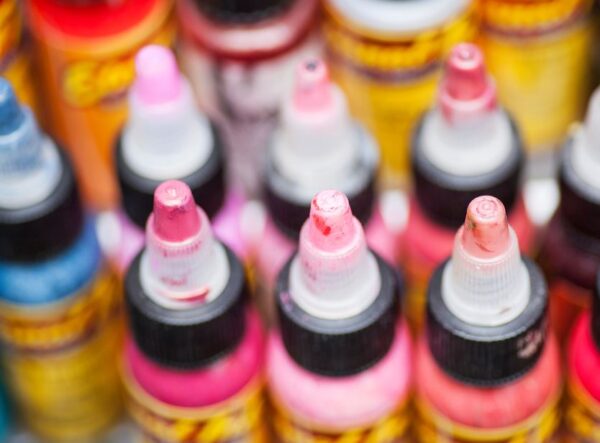
Inks bring a unique characteristic to resin projects. You can create of translucent and mesmerizing effects because of the way they react to each other and in the resin.
Additionally, incorporating metallic or pearlescent inks can add a touch of shimmer to your resin creations, creating truly eye-catching effects.
Natural Dyes & Colorants For Resin
When working with natural colorants, understanding a few key tips can help you achieve the best results.
Begin by experimenting with small amounts of the natural material, gradually increasing until the desired color is achieved.

Natural colorants may have subtler tones compared to synthetic alternatives, so patience is crucial during the mixing process.
Keep in mind that certain natural colorants may require additional preparation, such as extracting pigments through boiling or creating infusions, depending on the material used.
9. Troubleshooting For Coloring Resin
Bubbles In Resin
Bubbles in resin are a common challenge in resin casting, but with careful prevention and management, you can achieve bubble-free, crystal-clear results.
Prior to mixing, warm the resin gently to reduce its viscosity and minimize air entrapment. Stir the components slowly and deliberately, avoiding vigorous mixing that can introduce air.
Allow the resin to sit for a few minutes after stirring to let air bubbles rise to the surface.
Use a heat gun or torch to carefully pass over the resin surface, breaking and eliminating bubbles. For larger projects, consider pouring the resin in thin layers, allowing each layer to cure before adding more, reducing the chances of bubble entrapment.
See our complete guide: How To Remove Bubbles From Resin
Strategies for Avoiding Cloudiness
Cloudiness in resin can result from various factors, including improper mixing, moisture contamination, or the use of incompatible colorants.
To avoid cloudiness, mix your resin thoroughly, scraping the sides and bottom of the container to ensure all components are well-incorporated.
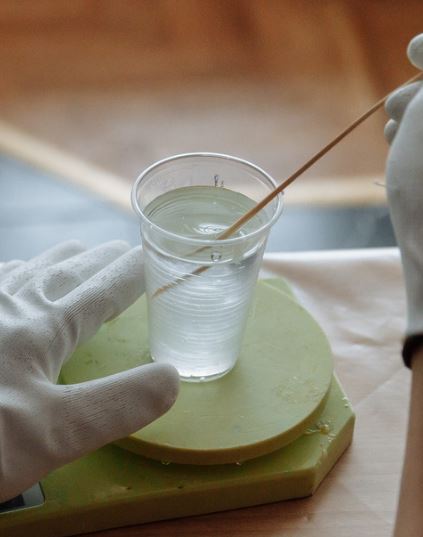
Work in a dry environment, as even minimal moisture can cause cloudiness in the cured resin. Choose colorants specifically formulated for resin use, and conduct small-scale tests to ensure compatibility.
If cloudiness persists, consider using a resin with a longer curing time, providing bubbles more time to rise and escape before the resin sets.
Color Fading
Color fading in resin can be influenced by various factors. Exposure to ultraviolet (UV) light is a primary contributor, causing certain pigments and dyes to degrade over time. This will also make your resin turn yellow.
Prolonged sunlight exposure, whether natural or artificial, can lead to gradual color fading. Alcohol inks are also know to fade when exposed to a lot of light so do be aware of that if you are starting a resin business.
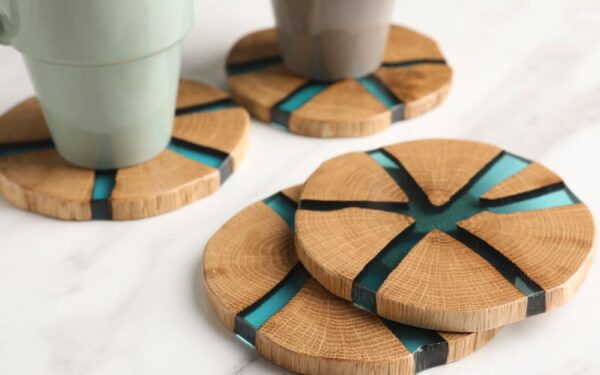
Additionally, the choice of colorants and their compatibility with the resin may impact color stability.
Understanding these factors is crucial for preserving the vibrancy of your resin creations over the long term.
Preventing Color Bleeding in Layers
Color bleeding, where one layer of resin interacts with another, can result in unintended blending and muddying of colors.
To prevent color bleeding in layered projects, ensure that each resin layer is fully cured before adding the next. This allows for a stable base and reduces the risk of colors bleeding into each other.
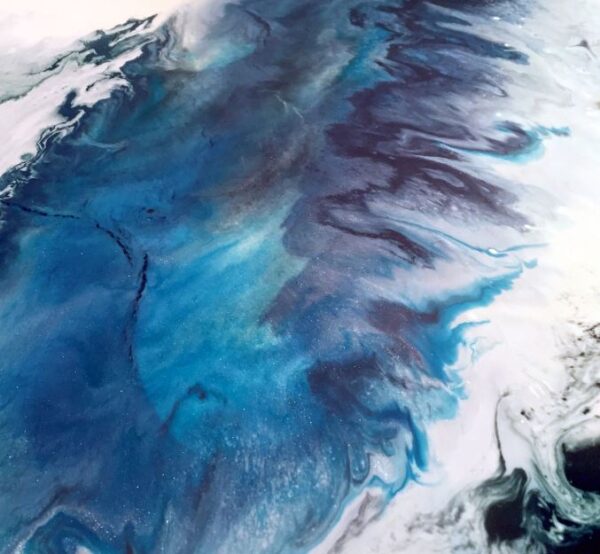
When working with multiple layers, especially in intricate designs, consider using a slower-curing resin. This will provide more time for precise layering and adjustments.
Additionally, carefully control the viscosity of your resin to prevent unintended mixing when pouring subsequent layers.
Maintaining Color Vibrancy Over Time
To maintain color vibrancy in resin projects over time, consider a few key practices. When selecting colorants, opt for those specifically designed for UV resistance, as they are less prone to fading.
If possible, limit the exposure of your resin creations to direct sunlight or intense artificial light. For added protection, consider applying a UV-resistant coating or resin topcoat to shield the colors from light-induced degradation.
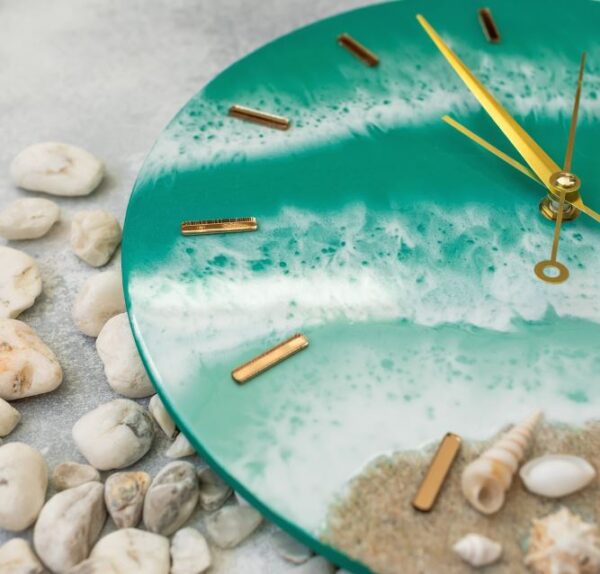
Storing your resin pieces in a cool, dark environment when not on display can further extend the lifespan of the vibrant colors.
By combining these precautions, you can enjoy the enduring beauty of your resin creations while minimizing the effects of color fading and bleeding.
10. Using Pre-Colored UV Resin
If you encounter challenges while coloring resin, consider opting for pre-colored resin as an alternative solution. UV resin, in particular, is well-suited for smaller crafting items and offers a convenient and ready-to-use option.
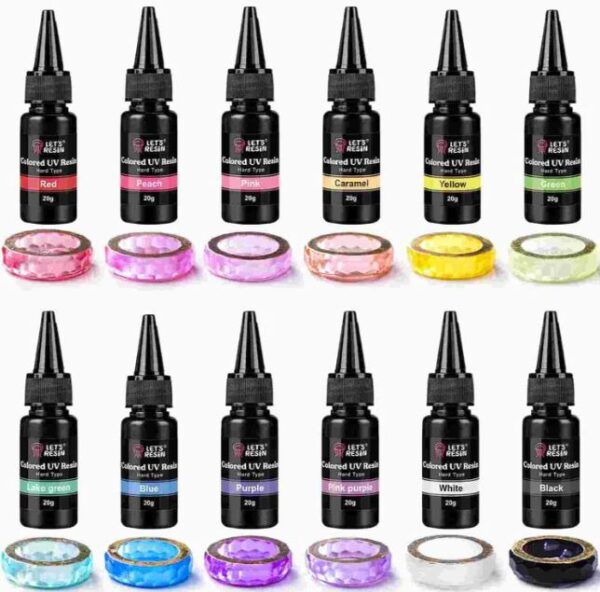
11. Coloring Resin FAQ’s
Keep in mind that mixing different brands may not give you the best results. It’s a good idea to keep with the same brand. If you are layering and each layer is independent then go ahead and use different brands of colorants for each layer.
Pigments provide opaque colors, while dyes offer transparency. Pigments are suitable for solid colors, while dyes are ideal for achieving translucent and stained glass effects.
Yes, you can create an ombre effect by pouring progressively lighter or darker shades of resin in layers. Blend the colors smoothly for a seamless transition.
Allow each resin layer to fully cure before adding the next. Use a slower-curing resin for intricate designs and control the viscosity to prevent unintended blending.

In Closing: Thank you for embarking on this colorful journey with us! We hope these insights into coloring techniques have sparked your creativity.
As you dive into your own projects, don’t hesitate to experiment, mix, and match. After all, the magic often happens in the process.
Wishing you endless joy and inspiration in your resin art endeavors! Thanks for being a part of our creative journey. Happy crafting!

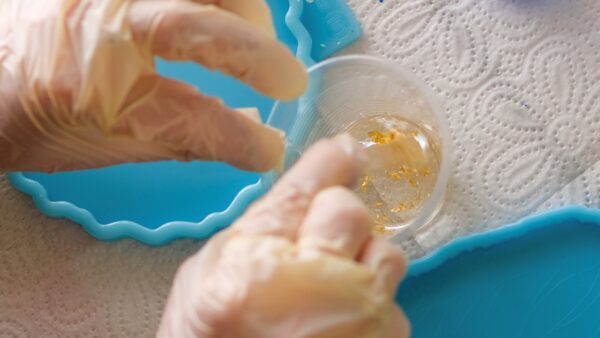
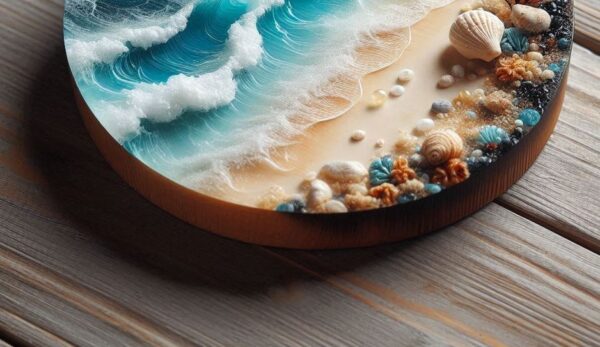
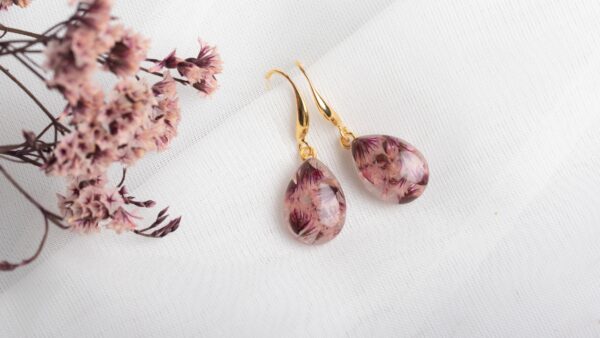
![9 Best Resins For Stabilizing Wood [2025]](https://craftydiyartistry.com/wp-content/uploads/2023/11/resin-for-wood-stabilizing-1b-600x499.jpg)
